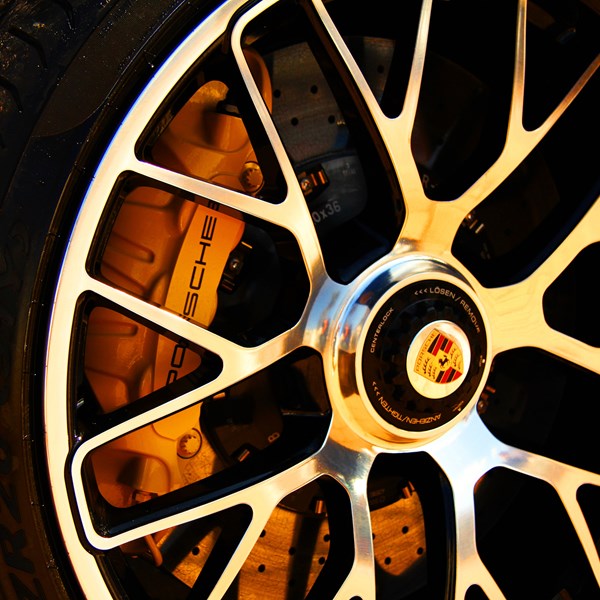On 16 December 2020, the Court of Appeal upheld the High Court’s 2019 trade mark infringement ruling against the luxury car brand, Bentley Motors.
BACKGROUND
In its earlier decision, the High Court held that Bentley Motors (the “Appellant”) had infringed the trade marks of family owned clothing business, Bentley Clothing (the “Respondent”).
The Respondent had held trade mark rights for signs including the word BENTLEY since 1982, and had first approached the Appellant about its use of that sign in connection with clothing in 1998. However, no agreement was reached between the parties, and the Appellant continued to sell clothing under the name Bentley.
The three registrations on which the Respondent relied in support of their infringement claim were all registered in respect of goods in Class 25, which relates to clothing, footwear and headgear. A key question at first instance was whether Bentley Motors had infringed any of Bentley Clothing’s marks by using the sign shown below (referred to as the “Combination Sign”).

THE FACTS AND ARGUMENTS
On appeal, the Appellant submitted that HHJ Hacon:
- held, incorrectly, that the Combination Sign was comprised of two distinct signs, one being identical to the Respondent’s marks. The Court had placed too much reliance on its finding that, prior to 2014, the Appellant had itself regarded the use as being of two signs rather than one.
- failed to consider whether its use ‘affected or was liable to affect, one of the functions of the trade mark[s]’ (a key criterion for any finding of trade mark infringement).
- wrongly restricted the goods which the Appellant was entitled, under the transitional provisions of the Trade Marks Act 1994, to continue to sell under the BENTLEY sign, to “jackets, silk ties, caps and scarves” (the goods in which the Appellant had traded under the previous, 1938, Act). He ought to have extended the right to use BENTLEY in respect of clothing as merchandise for its car marque more generally
JUDGMENT
In dismissing the appeal, Lord Justice Arnold (giving the lead judgment) held as follows:
- the Appellant’s change in policy from 2014 was not the most significant element in the judge’s reasoning in treating the Combination Sign as two signs. He reached a decision that was open to him (and with which the Court of Appeal ultimately agreed).
- the lower court had rejected a defence based on honest concurrent use on the facts of this case, and the Appellant had been denied permission to appeal on that point. In light of the manner in which the Appellant had framed its Defence, it flowed from that finding that the marks had been infringed.
- the Appellant’s proposed interpretation of the transitional provisions would enable it ‘carte blanche to change the clothing it sold according to changes in its business models’. To allow this ground of appeal would ‘defeat the legitimate expectation of the trade mark proprietor’.
IMPLICATIONS
The Court of Appeal’s judgment provides useful insight into the transitional provisions of the Trade Marks Act 1994, and the policy which underlies their existence and application. Speaking of the need for such provisions in the field of intellectual property Arnold LJ commented that IP rights ‘endure for long periods…the law cannot remain static for such long periods…changes in technology, business models and social attitudes…mean that IP legislation must be periodically revised if it is to remain fit for purpose’. Nevertheless, he observed that such legislative revisions must also provide legal continuity in a manner which addresses the legitimate expectations of rights owners and users alike (‘Right owners expect that they will not be deprived of existing rights, while users expect that existing non-infringing uses will not be turned into infringements.’)
Applying these principles, the Court of Appeal upheld the lower Court’s ruling that the Appellant had a defence only to use of its sign on promotional literature advertising “jackets, silk ties, caps and scarves”.
Quite apart from its legal significance, this case is of interest owing to the substantial difference in size between the parties. The Respondent’s solicitor, Mr Simon Bennett, described the outcome as a true ‘David & Goliath battle…[showing] the law protects brand owners from infringements, even in situations where there is no equality of arms’.
The decision also highlights the practical risks of brand extension. Bentley Motors is not the first luxury car maker to seek to navigate a new marketplace. Lamborghini, for example, has sought to become a lifestyle brand, selling an array of products, from watches to coffee machines and most recently, it has launched its own smart phone. While such diversification can generate significant commercial reward, the entry into new markets is fraught with risk from an intellectual property (and in particular, trade mark) perspective. Such risks can be mitigated with thorough due diligence.






